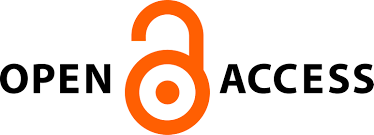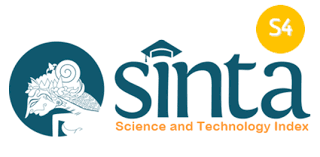PERENCANAAN PENGEMBANGAN PENGOLAHAN SAMPAH ORGANIK MENGGUNAKAN BLACK SOLDIER FLY (BSF) DI TPS 3R SAWUNGGALING, KEC. TRENGGALEK, KAB. TRENGGALEK
Main Article Content
Abstract
The population growth of Trenggalek sub-district has an impact on the increase in waste generation. However, waste reduction carried out through the implementation of TPS 3R Sawunggaling with a facility area of 362.5 m2 only manages 40% - 45% of incoming waste so that development is needed. The objectives of this planning include: evaluate the existing condition of waste management; identify waste generation, density, and composition; and plan the development of organic waste processing using Black Soldier Fly in technical and financial aspects at TPS 3R Sawunggaling. Sampling activities were carried out using the load-count analysis method and obtained data on waste generation, density, and composition of TPS 3R Sawunggaling. Technically, the planning was carried out by determining the service coverage of TPS 3R Sawunggaling, analyzing mass balance, planning the addition of organic waste processing facilities by BSF, and calculating labor requirements. Financially, the feasibility of planning is determined using the Net Present Value (NPV) method by calculating investment costs, operational and maintenance costs, and potential income. Based on the evaluation results, waste management at Sawunggaling TPS 3R needs improvement in terms of waste segregation at the source, adding a fixed schedule for waste collection, and increasing compost production. The waste generation and density of Sawunggaling 3R TPS were found to be 0.67 kg/person/day and 204.91 kg/m3. The waste composition is dominated by organic waste at 83.7% while the rest is inorganic waste. By utilizing the potential of organic waste entering Sawunggaling 3R TPS, it is planned to develop organic waste processing by adding a composting method using BSF larvae. In the planning year, Sawunggaling 3R TPS serves 1,268 people with waste generation of 864.34 kg/day. Through this planning, the residue of Sawunggaling 3R TPS was reduced from 57.9% to 24.6%, thus reducing the waste that is transported to the final processing site (TPA). In managing this facility, Sawunggaling 3R TPS requires an investment cost of Rp. 34,271,157.60, an operational cost of Rp. 217,601,983.80/year, and will generate a potential income of Rp. 434,747,586.62/year. From these costs, a positive NPV value is obtained, which means that the development planning is financially feasible.
Downloads
Article Details
Submission of a manuscript to Jurnal Purifikasi means that the work has never been published in another journal and is not under consideration for publication elsewhere. The author hereby agrees to submit the copyright of the manuscript and its contents to Jurnal Purifikasi, if accepted for publication. Accepted manuscripts will be published in printed form where the ISSN is bound in printed form, not in online form (pdf). Authors are not allowed to publish their work in other forms (journals) without permission from the Jurnal Purifikasi manager.
By submitting a manuscript, the author is deemed to know all the rights and obligations attached to each manuscript.








